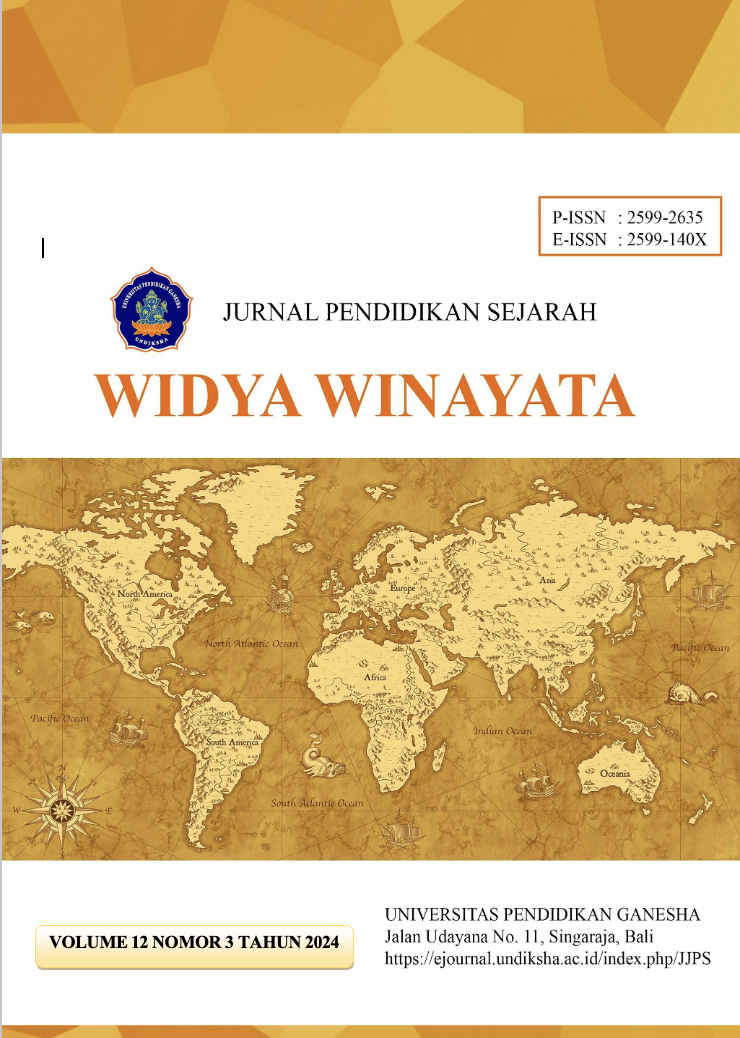Koleksi Tinggalan Sejarah Kesultanan Bima Di Museum Asi Mbojo Bima, Nusa Tenggara Barat (Sejarah, Koleksi Dan Potensinya Sebagai Sumber Belajar Sejarah Di SMA)
DOI:
https://doi.org/10.23887/jjps.v12i3.79884Abstract
This research aims to investigate: history, and the collections at the Asi Mbojo Museum in Bima that can be used as sources for teaching history in high schools. This study is a qualitative research using historical research methods through several steps: (1) heuristics, (2) source criticism, (3) interpretation, and (4) historiography. The results of this study indicate that current history education still lacks the ability to attract students' interest. If this continues, it will result in a generation of young people who do not love their homeland and local culture. Learning resources for history should not be limited to what is in books alone, as effective history teaching resources can include descriptions of places or environments, objects, people, and surrounding facts. Therefore, this research finds that the Asi Mbojo Museum has great potential as an effective learning medium to attract students' interest in directly observing the relics of the Bima Sultanate. There are many important relics that can be used as historical learning resources, including the Royal Crown, Royal Weapons such as Keris, Golok La Ngunti Rante, Sondi, ancient manuscripts, everyday life artifacts, and traditional Bima textile art collections. Thus, the historical heritage of the Bima Sultanate has great potential to be used as a source for teaching history in high schools.
Downloads
Published
How to Cite
Issue
Section
License
Copyright (c) 2024 M. Rizal Ifandy, I Made Pageh, Desak Made Oka Purnawati

This work is licensed under a Creative Commons Attribution-ShareAlike 4.0 International License.





.png)
